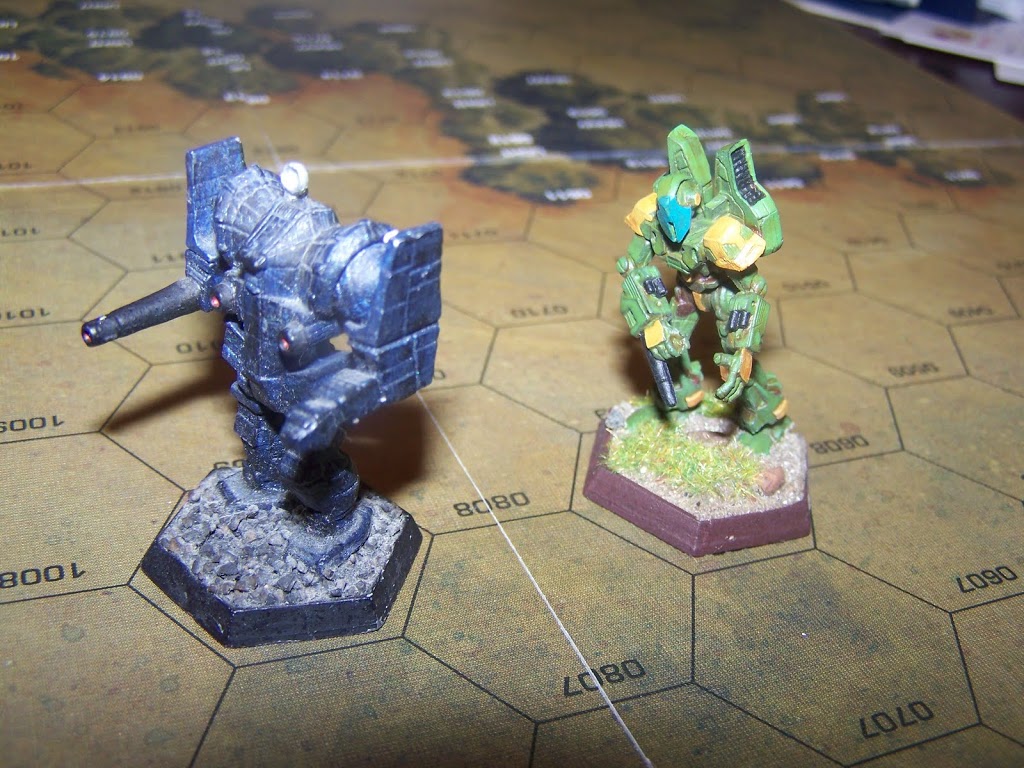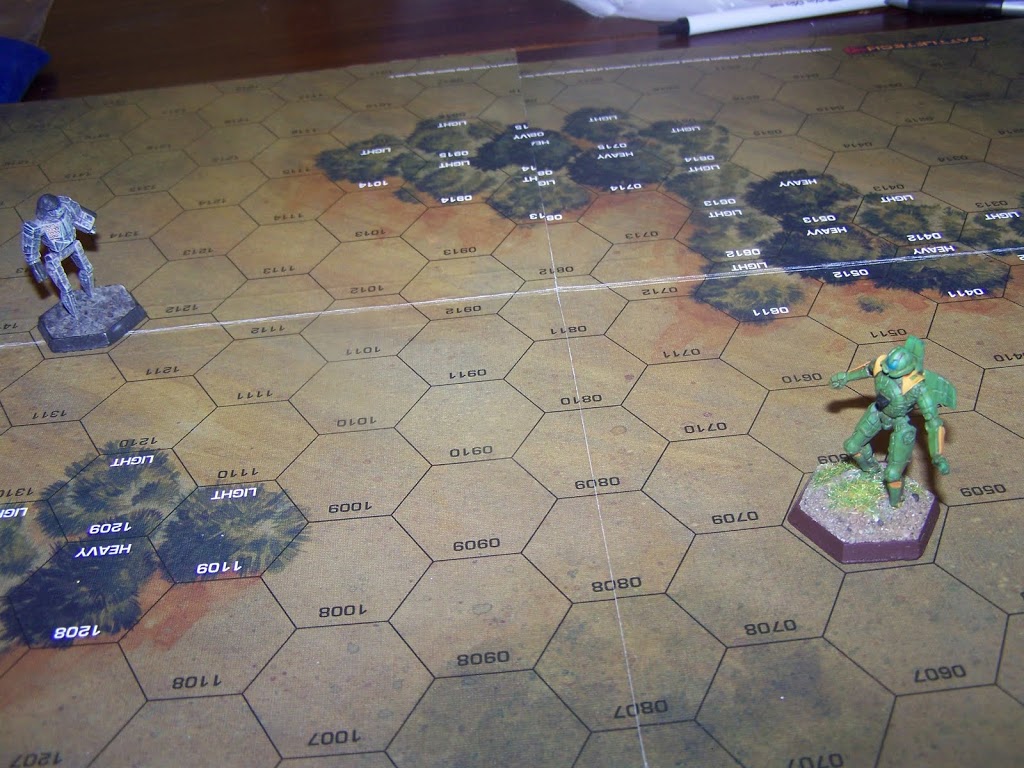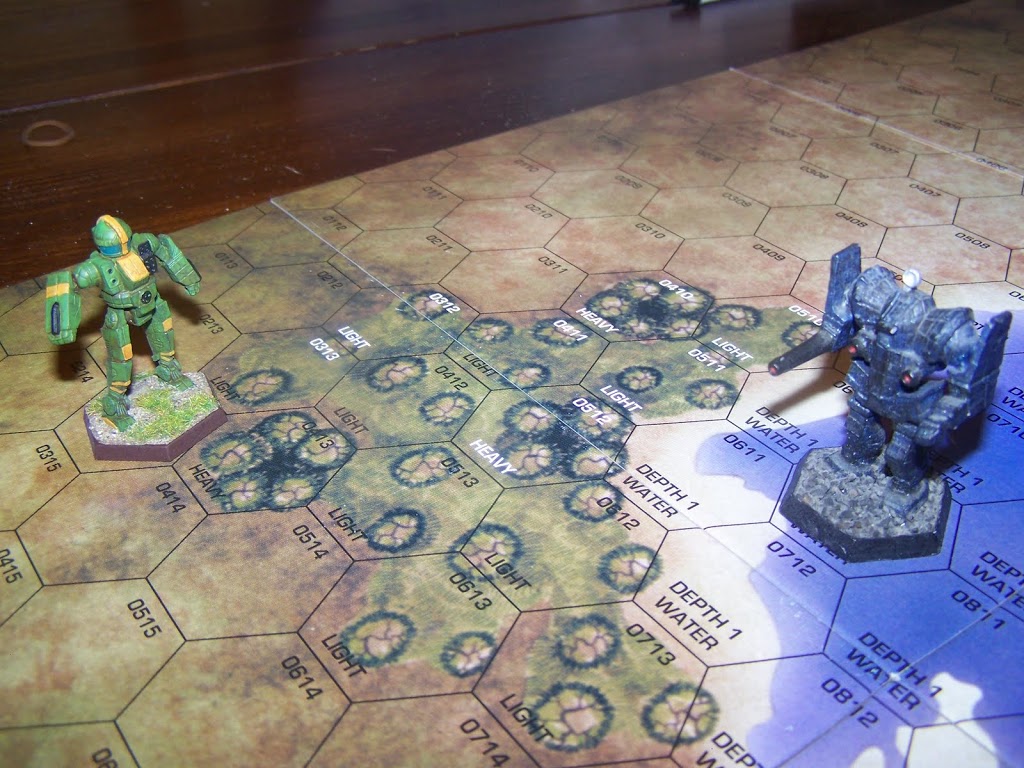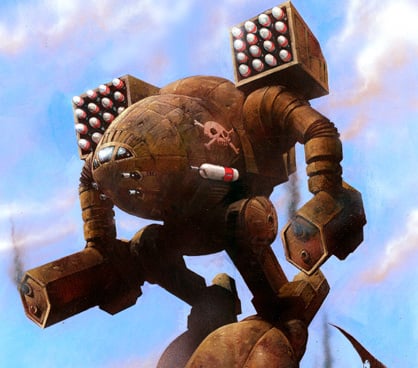Classic BattleTech Tactics Part 1: The Movement Phase
4 Minute Read
Jul 16 2011

Advertisement
In most war games, the positioning of your forces can be the most important aspect of each turn. One deft maneuver can both give you the advantage and force your opponent into doing what you want them to do. In BattleTech, no phase is as important as the Movement phase. Although you need to fire your weapons to deal damage, the right moves will set you up for success every time.
Initiative and Movement
In BattleTech, the player who wins the Initiative roll each turn has the opportunity to move one of their units last. Considering weapons fire is simultaneous, this is a player’s best chance for taking advantage their opponent. The player with the initiative can position their forces in ways that can limit their opponent’s weapons fire by taking advantage of firing arcs or by moving out of range and Line Of Sight. If your target has its big guns placed in its arms or side torsos, you can restrict the amount of fire coming your way by placing your Mech in their “blind spots”. This tactic can also allow you to concentrate your own fire on one particular side, or if your Mech is fast enough, the rear, where their armor is thinnest. This tactic is obviously favored by lighter, faster Mechs that have high Walk/Run rates, but Mechs equipped with Jump Jets can also use this tactic with great effect.
 |
| The very agile Phoenix Hawk is able to limit the firepower from the much larger Awesome by moving into its blind spot. |
Speed Kills
One of the features of BattleTech that makes it different from most war games is the impact movement has on shooting. When calculating your hit numbers, a player must consider their own movement as well as the movement of their target. While the penalties for your own movement are always fixed (+1 For Walking, +2 for Running, and +3 for Jumping), the penalties from your opponent’s move depends upon how many hexes they have moved. The penalties can range all the way up to +6 to hit a target that has moved 25 hexes or more (unusual for a Mech, but not an Aerospace fighter on a strafing run). Crafty players are able to strike a balance between the penalties from their own movement and those applied to their opponent from that movement as well. Knowing when it is a good idea to stand still and line up a shot or move flat out in a Run to make your Mech harder to hit is a judgment call the best players know when to make.
 |
| Although the Trebuchet (on the left) has a clear line of fire and is in short range for its LRM’s, the speed of the enemy Spider makes this shot far from easy. |
Know the Territory
The Movement phase is also a Mechwarrior’s opportunity to take advantage of their surroundings. By placing their Mech inside a wooded hex or under partial cover, you can make yourself harder to hit. Using vertical terrain, such as hills, water, or buildings, can also be very beneficial as any weapons fire that hits a location on a Mech covered by such features is ignored as the shot harmlessly bounces off the terrain. Water also doubles the effect of Heat Sinks that are submerged, allowing a Mech with overheating issues a chance to cool off. Using terrain effectively can really help larger Heavy and Assault Mechs counter the maneuverability of their lighter, faster foes.
 |
| The maneuverable, but lightly armed Quickdraw (left) takes cover behind the woods while the Awesome takes advantage of its position in the water to cool off. |
Only the Losers
Just because you lost the initiative does not mean you can’t still dictate the flow of the game. If you do go first, try to position yourself so that your opponent can’t out maneuver you. Walking backwards to keep your rear armor protected, putting yourself in a wooded hex, using hills and cliffs to force your enemy to move where you want them to and rivers and lakes to slow them down, or making yourself harder to hit by moving as much as possible are all viable tactics for a player who has lost the initiative.
What kind of gamer are you? Would you rather be able to run circles around your opponent or rely on arms and armor to see you through the fight? Stay tuned for part two; The Combat Phase.
Author: Guest Columnist
Advertisement





